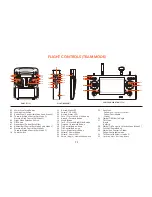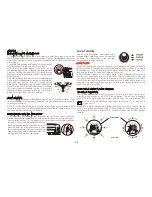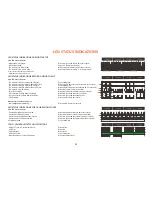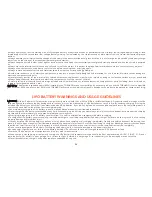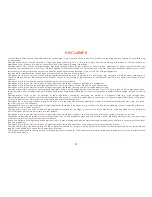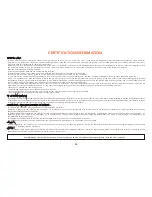
LIPO BATTERY WARNINGS AND USAGE GUIDELINES
WARNING: Lithium Polymer (LiPo) batteries are significantly more volatile than alkaline, NiCd or NiMH batteries. All instructions and warnings must be
followed exactly to prevent property damage and/or serious injury as the mishandling of LiPo batteries can result in fire. By handling, charging or using the
included LiPo battery you assume all risks associated with LiPo batteries. If you do not agree with these conditions please return the complete product in
new, unused condition to the place of purchase immediately.
• You must always charge the LiPo battery in a safe, well-ventilated area away from flammable materials.
• Never charge the LiPo battery unattended at any time. When charging the battery you must always remain in constant observation to monitor the charging
process and react immediately to any potential problems that may occur.
• After flying/discharging the LiPo battery you must allow it to cool to ambient/room temperature before recharging.
• To charge the LiPo battery you must use only the included charger or a suitably compatible LiPo battery charger. Failure to do so may result in a fire causing
property damage and/or serious injury.
• If at any time the LiPo battery begins to balloon or swell, discontinue charging or discharging immediately. Quickly and safely disconnect the battery, then
place it in a safe, open area away from flammable materials to observe it for at least 15 minutes. Continuing to charge or discharge a battery that has begun
to balloon or swell can result in a fire. A battery that has ballooned or swollen even a small amount must be removed from service completely.
• Do not over-discharge the LiPo battery. Discharging the battery too low can cause damage to the battery resulting in
reduced power, flight duration or failure of the battery entirely. LiPo cells should not be discharged to below 3.0V each under load.
• Store the LiPo battery at room temperature and in a dry area for best results.
• When charging, transporting or temporarily storing the LiPo battery the temperature range should be from approximately 40–120° F (5–49° C). Do not
store the battery or aircraft in a hot garage, car or direct sunlight. If stored in a hot garage or car the battery can be damaged or even catch fire.
• Never leave batteries, chargers and power supplies unattended during use.
25
• Always operate your aircraft starting with a fully charged battery. Always land as soon as possible after the first level low voltage battery warning or land
immediately after the second level low voltage battery warning (as indicated by the vibrations and audible alerts from the transmitter/personal ground
station).
• Always operate your aircraft when the voltage of the battery in the transmitter/personal ground station is in a safe range (as indicated by the battery charge
status icon on the screen of the transmitter/personal ground station).
• Always keep the aircraft in clear line of sight and under control, and keep the transmitter/personal ground station powered on while the aircraft is powered
on.
• Always move the throttle control stick down fully and turn off the motors in the event the propellers/rotor blades come into contact with any objects.
• Always allow components and parts to cool after use before touching them and flying again.
• Always remove batteries after use and store/transport them per the corresponding guidelines.
• Avoid water exposure to all electronic components, parts, etc. not specifically designed and protected for use in water. Moisture causes damage to
electronic components and parts.
• Never place any portion of the aircraft or any related accessories, components or parts in your mouth as doing so could cause serious injury or even death.
• Always keep chemicals, small parts and electronic components out of the reach of children.
• Carefully follow the instructions and warnings included with this aircraft and any related accessories, components or parts (including, but not limited to,
chargers, rechargeable batteries, etc.).
CAUTION: The electronic speed controls (ESCs) installed in the TORNADO are not compatible with any other product, and the TORNADO is not compatible
with any other ESCs. Use of any other ESCs in the TORNADO will cause a crash, which may result in damage to the product, property and/or cause serious injury.
Summary of Contents for Typhoon H
Page 1: ...USER MANUAL T1 0 ...


